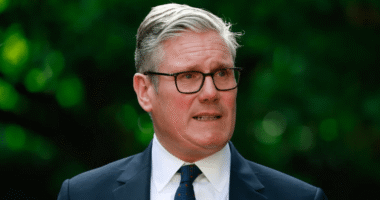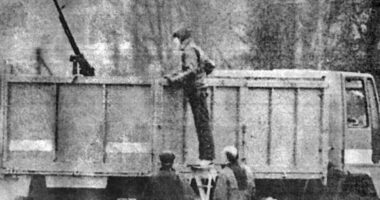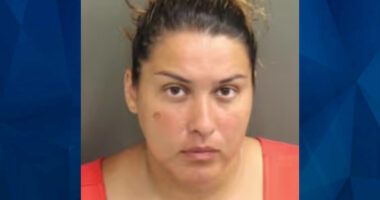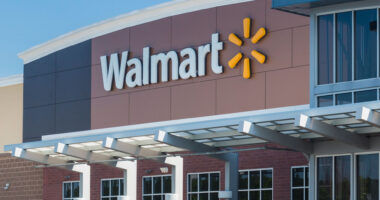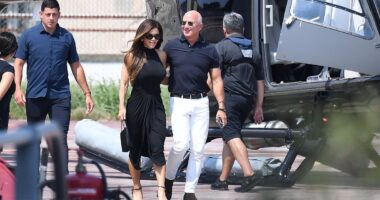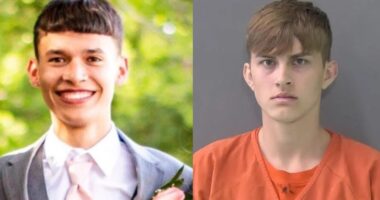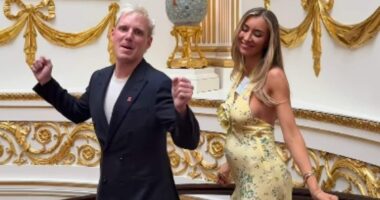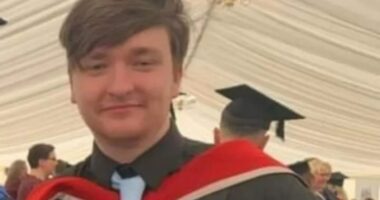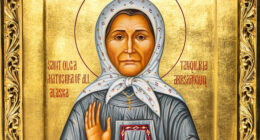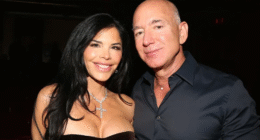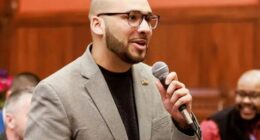According to President Donald Trump’s representative to Ukraine, the country might undergo a division similar to Berlin post-World War Two in a potential peace agreement.
General Keith Kellogg proposed the idea of Western troops assuming control over specific areas as part of a ‘reassurance force’, while the Russians would take charge of the eastern region.
Ukrainian forces would then hold an 18-mile wide demilitarised zone between them.
General Kellogg, a significant American figure involved in resolving the conflict that has lasted three years, clarified that there would be no US troops present on the ground, contrasting the situation in Germany’s restructuring after 1945.
He told The Times that British and French-led troops occupying west of the Dnipro river – which cuts Ukraine in half north to south and could act as a demarcation line – would ‘not be provocative at all’ to the Kremlin.
‘You could almost make it look like what happened with Berlin after World War Two, when you had a Russian zone, a French zone and a British zone,’ he added.
His comments came as the Kremlin last night dismissed a key meeting between Vladimir Putin and Donald Trump’s peace envoy – in an apparent sign Russia is not interested in a Ukraine ceasefire.
Putin’s spokesman said the talks with US envoy Steve Witkoff, which lasted more than four hours, were ‘not momentous’ and there would be no concessions.

Ukraine could be carved ‘almost like Berlin after World War Two’ as part of a peace deal, President Donald Trump’s envoy to the country said last night

Ukrainian President Volodymyr Zelensky attends a joint press conference with Belgian Prime Minister Bart De Wever after their meeting in Kyiv, Ukraine, 08 April 2025

Russian President Vladimir Putin chairs a meeting on the Russian Navy’s development strategy at the Admiralty building in St. Petersburg, Russia, 11 April 2025
Russia’s hardball stance appeared to infuriate the US President who subsequently posted on the Truth Social platform a demand that Putin ‘gets moving’ over a peace deal to prevent further deaths.
Russia has already rejected an American-backed proposal for a 30-day unconditional ceasefire.
Witkoff, who travelled to St Petersburg with his wife Lauren, was seen visiting St Isaac’s Cathedral and was presented with gifts by representatives of a local synagogue while awaiting the meeting with Putin.
Putin had not been seen in public since 1 April, with the Kremlin releasing what were widely believed to be pre-recorded videos of meetings with loyal officials.
On Friday, he resurfaced for a major government session on the development of the Navy and later met with Witkoff. The Kremlin statement read: ‘Today the President is working in St Petersburg, holding a meeting on the development of the Navy.’
His reappearance came amid renewed US criticism of Russia’s continued bombardment of Ukrainian cities in defiance of international calls for a ceasefire.
It comes after four of Ukraine’s major cities were hit in a mass Russian drone attack.
The assault on Kharkiv began while the talks were still under way, with multiple explosions reported in the city shortly after the meeting started.

Russia’s President Vladimir Putin shakes hands with US President Donald Trump’s envoy Steve Witkoff during a meeting in Saint Petersburg on April 11, 2025

General Keith Kellogg (pictured) said Ukraine could be divided similarly to Berlin after World War Two as part of a peace deal

US envoy Steve Witkoff (L) and Russian President Vladimir Putin shake hands after an hours-long meeting on Friday
Strikes on Kyiv, Dnipro, and Odesa followed later in the night, continuing after the talks had concluded.
The meeting, reportedly lasting four hours, ended with a brief statement from Kremlin-linked official Kirill Dmitriev, who called the discussions ‘productive’.
No outcomes or ceasefire proposals were made public.
Kyiv, Kharkiv, Dnipro, Odesa and wider regions were hit in one of the most extensive drone assaults in recent weeks.
In Kyiv, drones struck industrial facilities in the Svyatoshynskyi district, igniting fires in warehouses and injuring three people.
In Kharkiv, the mayor reported over 20 drone hits, which also injured two people and caused significant damage to storage facilities.
In Dnipro, strikes set fire to homes and agricultural sites, while Odesa authorities confirmed four explosions and several blazes.
Russia said it intercepted 36 Ukrainian drones overnight, including eighteen over Kursk and thirteen over Rostov.

It comes after four of Ukraine’s major cities were hit in a mass Russian drone attack. Picture shows strike aftermath in Dnipro

The assault on Kharkiv began while the talks were still under way, with multiple explosions reported in the city shortly after the meeting started

Strikes on Kyiv, Dnipro, and Odesa followed later in the night, continuing after the talks had concluded
In the Krasnodar region, south of Russia, falling drone debris damaged railway infrastructure and halted train traffic. No injuries were reported.
It comes as Ukraine’s allies pledged a record 21 billion euros (£18.2 billion) of military aid for the country, with the UK Defence Secretary warning that 2025 was ‘the critical year’ for the war.
The support announced on Friday includes a £450 million package from Britain and Norway to fund radar systems, anti-tank mines, vehicle repairs and hundreds of thousands of drones for Kyiv.
Witkoff travelled to Russia again on Friday to press the Kremlin to accept a truce but in Brussels there appeared to be little confidence that a pause in hostilities would come.
German defence minister Boris Pistorius said ‘ongoing aggression’ from Russia meant ‘we must concede that peace in Ukraine appears to be out of reach in the immediate future’.




